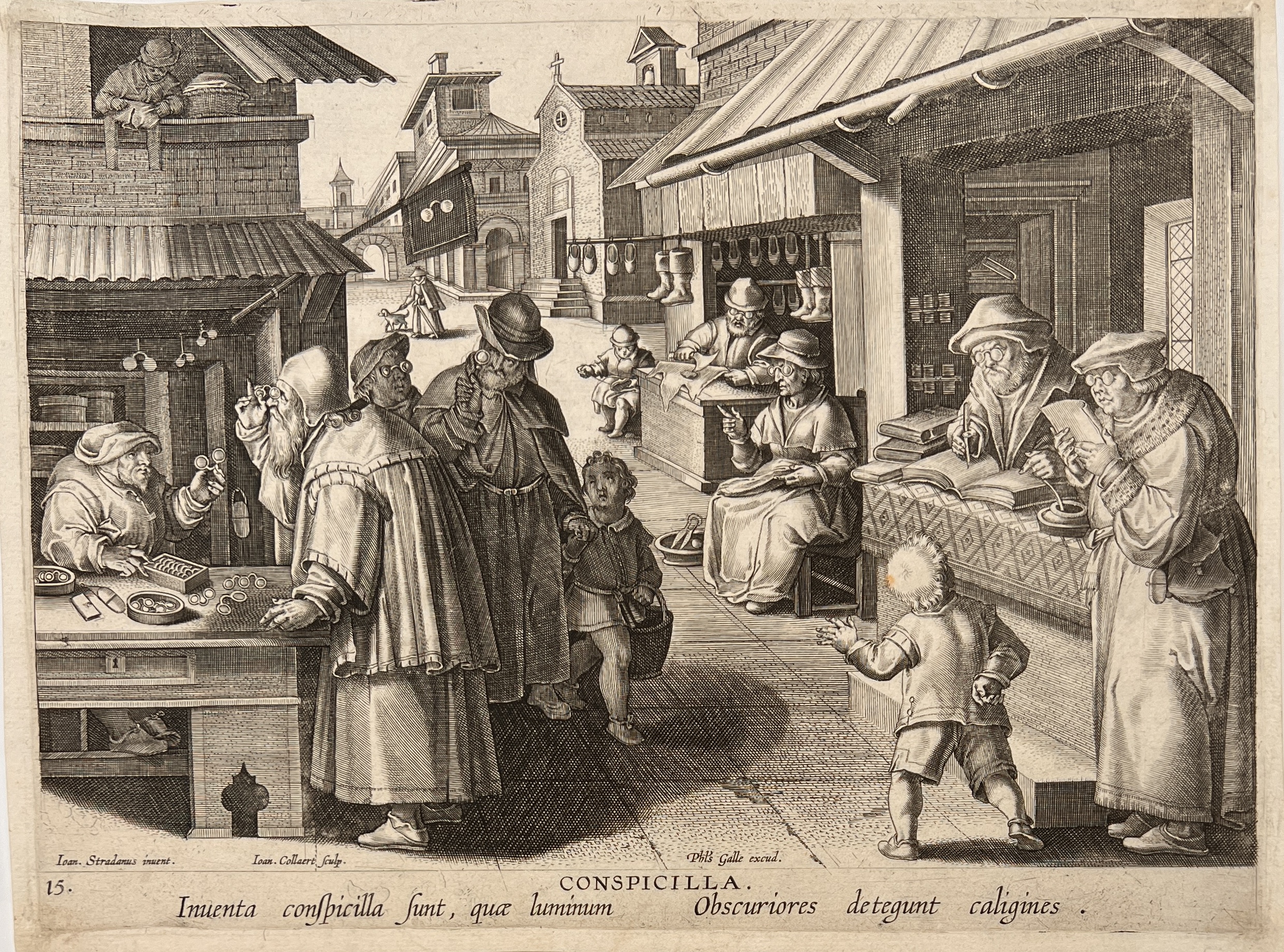Plate 15 from the Nova Reperta series.
State 2/4 with the number 15 in the lower left corner to the address of Philippe Galle, before its replacement by that of Johannes Galle.
(The series was first published around 1591 by Philippe Galle in Antwerp and was successively republished by Karel de Mallery, after 1612, Theodoor Galle, before 1636 and Johannes Galle before 1677.)
Very beautiful proof on laid paper watermarked with a double crowned C, the corners reinforced.
ca.1591
New Hollstein: 337
The Nova Reperta series, that is to say new discoveries (or inventions), illustrates certain notable discoveries and inventions for Europe at the end of the 16th century.
These repertae are highlighted and “situation” by Stradan in a lively and dramatic way, according to the advice given by humanist pedagogues like Erasmus and of which Jean-Claude Margolin gives an analysis in his: "About Stradan's Nova reperta" in "Esthétiques de la nouveauté à la Renaissance",Franck Lessay et François Laroque (dir.), Presses Sorbonne Nouvelle Collection, Paris, 2001
"Here it is a Venetian shop, run by a glasses merchant, in front of which potential customers linger, trying this relatively new object (...) We cannot help but note multiple features which make this scene, lively and full of wit, a true satire of these glass discs connected by a pince-nez, a satire that it is easy to extend to the visually impaired who believe they find in this object a remedy for their sight It is enough to look, through our eyes, of course, and with our psychic glasses, that is to say with our ingenium, the characters in the street scene, merchants, passers-by, or immobilized man busy trying to read a paper, all adorned with besicles, to realize that we are not only dealing with a didactic illustration, as in the plates of the future Encyclopédie by Diderot and d'Alembert. Besides, it is only d examine the Latin phrase, engraved under the drawing: it is undoubtedly devoid of the satirical irony which pierces the drawing; but beneath its appearance as an objective or neutral proposition, it does not assign any value or therapeutic function to glasses; she is content with a simple observation: Inventa conspicilla sunt, quae luminum obscuriores detegunt caligines, that is to say: “Glasses were invented, which reveal the too dark fogs of the eyes”(...) Thus, It is not said that glasses allow you to see better or correct faulty eyesight, but simply to reveal your faults. This also corresponded to reality, as the spectacle lenses, even manufactured on the island of Murano, were of poor optical quality."
CONSPICILLA OU L'INVENTION DES LUNETTES
- Author : COLLAERT JAN II ( 1561-1628 )
- Technic: Burin
- Width : 270.00
- Height : 200.00
- Leaf width : 280.00
- Leaf height : 213.00
- Availability: In Stock
-
1,600.00 €

